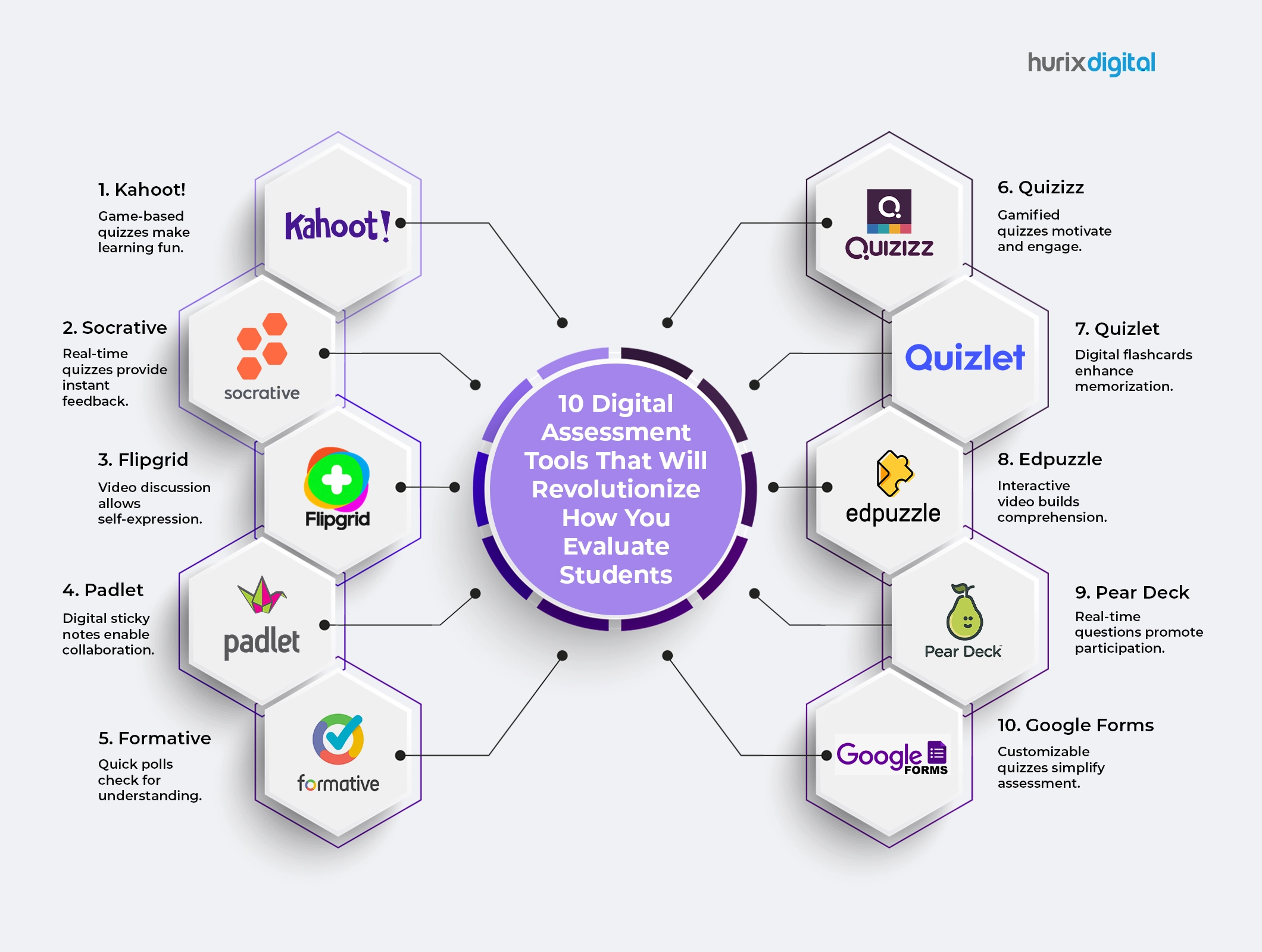Assessing student progress is an essential part of education. Digital assessment tools provide educators with efficient, engaging, and data-driven methods to evaluate learning. These tools enhance traditional assessments by offering real-time feedback, interactive formats, and personalized learning experiences.
Using technology for assessments helps educators save time, track student progress effectively, and improve learning outcomes.
Revolutionize your assessments with Hurix Digital. Contact us now to empower educators and engage learners.

Why Digital Assessment Tools Matter
Digital tools have transformed the way educators evaluate students. Here’s why they are valuable:
- Instant feedback – Students receive immediate results, helping them understand mistakes.
- Engaging formats – Gamified quizzes and interactive assessments make learning fun.
- Data tracking – Teachers can analyze student performance over time.
- Accessibility – Online assessments allow students to take tests from anywhere.
Types of Digital Assessment Tools
1. Gamified Quizzes
Gamification makes assessments interactive and enjoyable. Tools that use quizzes, leaderboards, and rewards encourage participation and motivation.
2. Real-Time Polling
Live polls and instant-response tools help educators gauge student understanding during lessons. These tools allow teachers to adjust instruction based on student responses.
3. Interactive Video Assessments
Video-based quizzes allow students to answer questions as they watch content. This helps reinforce key concepts and ensures better retention.
4. Digital Flashcards and Study Aids
Online flashcards provide a self-paced way for students to review key concepts, improving memorization and recall.
5. Open-Ended Responses and Discussions
Some tools allow students to submit written responses or engage in video discussions, promoting deeper understanding and critical thinking.
Benefits of Digital Assessment Tools
✔ Time efficiency – Automated grading saves teachers valuable time.
✔ Personalized learning – Adaptive tools adjust question difficulty based on student performance.
✔ Increased engagement – Interactive assessments keep students motivated.
✔ Better analytics – Teachers can monitor progress and identify learning gaps.
Choosing the Right Tool
Educators should consider:
- Ease of use – The platform should be intuitive for students and teachers.
- Integration – Compatibility with other learning systems is essential.
- Security – Student data must be protected.
- Customization – The ability to create tailored assessments enhances effectiveness.
Final Thoughts
Digital assessment tools improve the way educators measure learning. By incorporating interactive quizzes, video-based evaluations, and real-time feedback, teachers can enhance student engagement and gain valuable insights into academic progress.



